Essayer OR - Gratuit
Marie Tharp - The Woman Who Mapped the Ocean Floor
Muse Science Magazine for Kids
|May - June 2019
The woman who mapped the ocean floor

In the 1920s, Marie Tharp was a little girl who spent many days bumping along country roads with her dad in his rickety green truck. He worked for the Department of Agriculture’s Bureau of Soils, visiting farms. He tested soil and drew planting maps for the farmers. Because of her dad’s job, her family moved a lot. By the time she finished high school, Marie had attended 17 schools. When she wasn’t on the road with her dad or in a new school, there was lots of time alone, reading, drawing, and playing violin.
Marie wanted to become a soil surveyor like her dad. But she knew that was unlikely. In those days, women rarely had careers in the sciences. Most were only encouraged to work as a teacher, secretary, or nurse.
She began her freshman year at Ohio University as an art major and planned to become a teacher. Then she switched to music. Nothing felt right, so she tried classes in German, zoology, paleobotany, philosophy, and finally geology. She loved geology. One of her geology teachers suggested that she also take a drafting class. Drafting is a type of technical drawing. The teacher thought Marie would never find work as a geologist. But if she could draft, she might work in a geologist’s office.

Working around Geology
Marie graduated in 1943 with degrees in English and music. She heard about a petroleum geology program offered by the University of Michigan. Most men were away fighting in World War II. So the school was allowing women to enroll in the program for the first time. Best of all, they guaranteed a job in the petroleum industry after graduation. Marie didn’t hesitate. She graduated from Michigan with a master’s degree in geology. Then she stayed on to take classes in physics, math, and chemistry.
Cette histoire est tirée de l'édition May - June 2019 de Muse Science Magazine for Kids.
Abonnez-vous à Magzter GOLD pour accéder à des milliers d'histoires premium sélectionnées et à plus de 9 000 magazines et journaux.
Déjà abonné ? Se connecter
PLUS D'HISTOIRES DE Muse Science Magazine for Kids
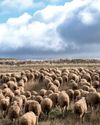
Muse Science Magazine for Kids
ANIMAL FIREFIGHTER TO THE RESCUE
Can animals help manage the risks of deadly wildfires?
3 mins
Muse July 2025: The Story Behind Wildfires
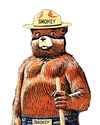
Muse Science Magazine for Kids
FIRE DANGER
WHY THE RISK OF WILDFIRES KEEPS GROWING
4 mins
Muse July 2025: The Story Behind Wildfires
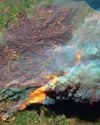
Muse Science Magazine for Kids
The Miller NEW Normal
WHAT TODAY’S WILDFIRES TELL US ABOUT OUR FUTURE
8 mins
Muse July 2025: The Story Behind Wildfires
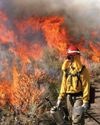
Muse Science Magazine for Kids
WOMEN AND FIREFIGHTING: A GOOD FIT
Jessica Gardetto is a firefighter. Her father was, too. “I grew up with my dad coming home smelling like wildfire and covered in soot,” she says.
1 min
Muse July 2025: The Story Behind Wildfires

Muse Science Magazine for Kids
What is happening on your fingertips when they get all wrinkly in a hot tub?
—Felix G., age 10, Montana
1 mins
Muse July 2025: The Story Behind Wildfires

Muse Science Magazine for Kids
WHEN the SMOKE CLEARS
THE LINGERING EFFECTS OF THE RECENT PACIFIC PALISADES AND ALTADENA EATON FIRES
6 mins
Muse July 2025: The Story Behind Wildfires

Muse Science Magazine for Kids
PICKING TEAMS
Keep it fair with a strategy that relies on geometry.
2 mins
Muse July 2025: The Story Behind Wildfires
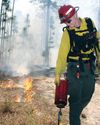
Muse Science Magazine for Kids
SHAN CAMMACK
WILDLIFE BIOLOGIST AND FIRE SAFETY OFFICER
3 mins
Muse July 2025: The Story Behind Wildfires
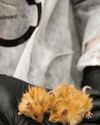
Muse Science Magazine for Kids
Scientists Create Mice With Woolly Mammoth-Like Fur
RESEARCHERS AT A COMPANY IN TEXAS ARE WORKING TO CREATE A LIVING ANIMAL THAT RESEMBLES THE EXTINCT WOOLLY MAMMOTH. Recently, they produced mice with traits of the large mammal. The mice all have coats with mammoth-like fur, and some of the small mammals also have genes that help them store fat. Both features would help the animals survive in the cold Arctic, where the woolly mammoth once lived.
1 min
Muse July 2025: The Story Behind Wildfires

Muse Science Magazine for Kids
Cool Sunshade Added to the Nancy Roman Space Telescope
THE NANCY ROMAN SPACE TELESCOPE IS A NEW TELESCOPE THAT NASA IS BUILDING AND WILL LAUNCH INTO SPACE, LIKELY IN EARLY 2027.
1 min
Muse July 2025: The Story Behind Wildfires
Translate
Change font size

